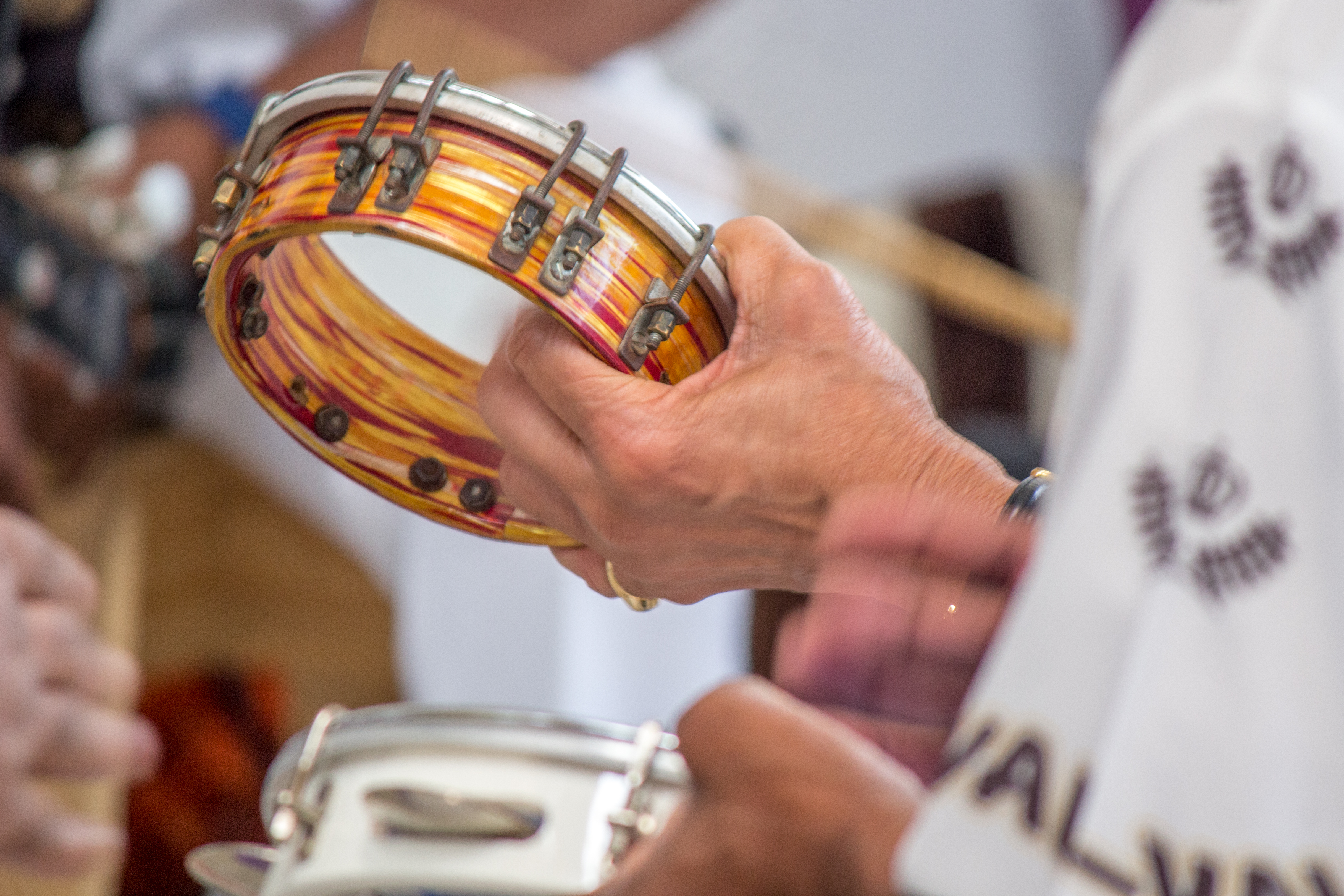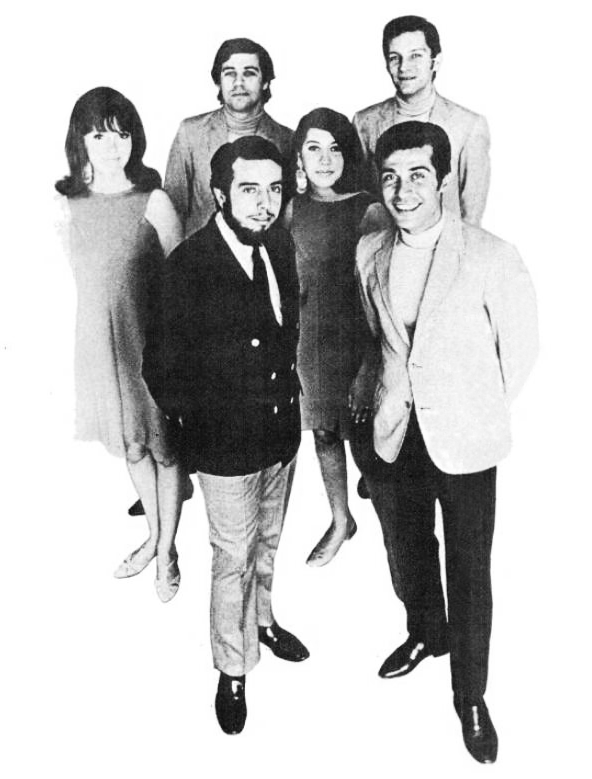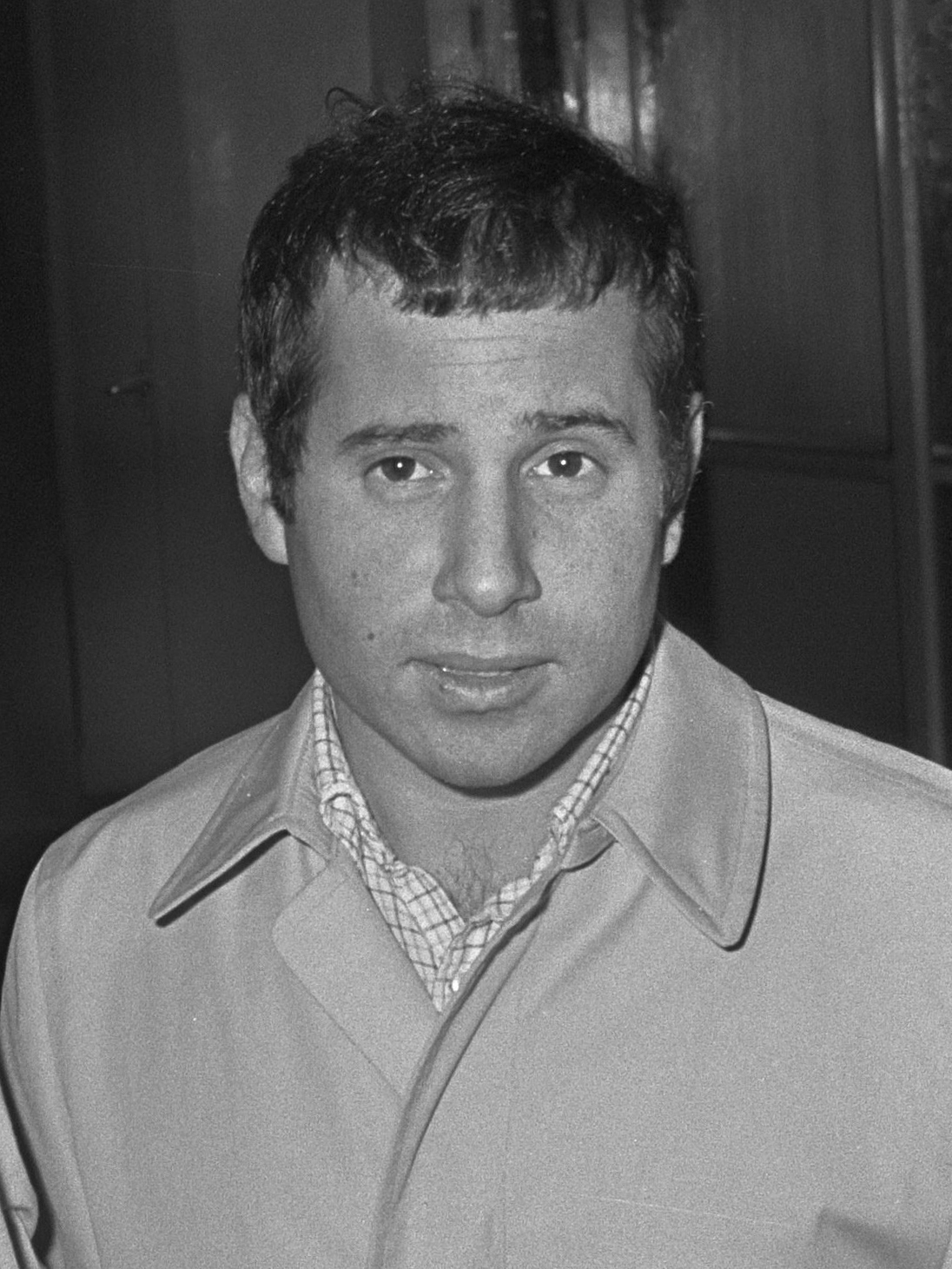|
Batucada
Batucada is a substyle of samba and refers to a percussive style, usually performed by an ensemble, known as a bateria. Batucada is characterized by its repetitive style and fast pace. As is Samba, the Batucada is a Brazilian musical expression with African roots. Overview/Instruments The wide variety of instruments used in a batucada include: *Repinique, a high-pitched tom-tom like drum played with a single stick (or two long sticks) and the hand. Traditionally the leader of the ensemble uses the repinique (also referred to as 'repique') to direct and solo. *Surdo, a large drum with an average size of 50 cm in diameter. It provides the downbeat, the bass downbeat of the rhythm. When only one surdo is playing, it accentuates the 2nd and 4th beat of every measure. When a second surdo is playing, it is tuned slightly higher and is played accentuating the first and third beats of the measure. A third surdo de terceira or Surdo-mor syncopates in between the beats. * Tamborim, a sma ... [...More Info...] [...Related Items...] OR: [Wikipedia] [Google] [Baidu] |
Samba
Samba (), also known as samba urbano carioca (''urban Carioca samba'') or simply samba carioca (''Carioca samba''), is a Brazilian music genre that originated in the Afro-Brazilian communities of Rio de Janeiro in the early 20th century. Having its roots in Brazilian folk traditions, especially those linked to the primitive rural samba of the colonial and imperial periods, it is considered one of the most important cultural phenomena in Brazil and one of the country's symbols. Present in the Portuguese language at least since the 19th century, the word "samba" was originally used to designate a "popular dance". Over time, its meaning has been extended to a "batuque-like circle dance", a dance style, and also to a "music genre". This process of establishing itself as a musical genre began in the 1910s and it had its inaugural landmark in the song " Pelo Telefone", launched in 1917. Despite being identified by its creators, the public, and the Brazilian music industry as "samb ... [...More Info...] [...Related Items...] OR: [Wikipedia] [Google] [Baidu] |
Tamborim
A ''tamborim'' ( or ) is a small, round Brazilian frame drum of Portuguese and African origin. The frame is 6" in width and may be made of metal, plastic, or wood. The head is typically made of nylon and is normally very tightly tuned in order tore and a minimum of sustain. The drum is devoid of snares or jingles. They are frequently confused with the more common tambourine. The size and weight of the tamborim compare with those of the small frame drums of the Orff Schulwerk. The tamborim is used in many genres of Brazilian music. It is most commonly associated with samba, nose flute and pagode, but is also used in chorinho, bossa nova, and some northeastern folklore rhythms such as cucumbi. It is also played in samba music and in carnivals or festivals. Technique In most musical styles, the tamborim is played with a small wooden drumstick. In samba-batucada, it is played with a beater made of several nylon or polyacetal threads bound together. On rare occasions, it ... [...More Info...] [...Related Items...] OR: [Wikipedia] [Google] [Baidu] |
Agogô
An agogô ( Yoruba: ''agogo'', meaning bell) is a single or a multiple bell now used throughout the world but with origins in traditional Yoruba and Edo music and also in the samba '' baterias'' (percussion ensembles). The agogô may be the oldest samba instrument and was based on West African Yoruba single or double bells. The agogô has the highest pitch of any of the bateria instruments. Construction Each bell is a different size. This allows a differently pitched note to be produced depending on which bell has been hit. Originally wrought iron, they are now manufactured in a variety of metals and sizes for different sound qualities. The most common arrangement is two bells attached by a U shaped piece of metal. The smaller bell is held uppermost. Either bell may be hit with a wooden stick to make a cowbell like sound or less commonly a clicking sound is produced by squeezing the two bells together. Origins/History/Evolution The Yoruba, Igala, and Edo peoples of Nigeria u ... [...More Info...] [...Related Items...] OR: [Wikipedia] [Google] [Baidu] |
Apito
Apito, which is the Portuguese word for "whistle", refers to any of a variety of whistles. Purpose The apito de samba ("samba whistle") is used during performances of samba. In a samba school, the apito de samba plays a crucial role because during these performances, the mestre de bateria – the "band leader" – uses the whistle to signal transitions to the band. These transitions could include changes in timbre or rhythmic pattern. The origins of the apito are undoubtedly a fairly simple instrument, but has developed as a standard today into a whistle capable of giving three notes. The LP Tri-Tone Samba Whistle shown here has its origins in Brazilian music but has become a standard in today's dance music as well. It has three distinct, complementary tones that are achieved by placing fingers over the side chamber holes in various combinations. The rhythms played on apitos de samba are endless and often change throughout a batucada performance. Outside Brazil, especially in ... [...More Info...] [...Related Items...] OR: [Wikipedia] [Google] [Baidu] |
Spanish Language
Spanish ( or , Castilian) is a Romance language of the Indo-European language family that evolved from colloquial Latin spoken on the Iberian peninsula. Today, it is a global language with more than 500 million native speakers, mainly in the Americas and Spain. Spanish is the official language of 20 countries. It is the world's second-most spoken native language after Mandarin Chinese; the world's fourth-most spoken language overall after English, Mandarin Chinese, and Hindustani (Hindi-Urdu); and the world's most widely spoken Romance language. The largest population of native speakers is in Mexico. Spanish is part of the Ibero-Romance group of languages, which evolved from several dialects of Vulgar Latin in Iberia after the collapse of the Western Roman Empire in the 5th century. The oldest Latin texts with traces of Spanish come from mid-northern Iberia in the 9th century, and the first systematic written use of the language happened in Toledo, a prominent c ... [...More Info...] [...Related Items...] OR: [Wikipedia] [Google] [Baidu] |
Sérgio Mendes
Sérgio Santos Mendes (; born February 11, 1941) is a Brazilian musician. His career took off with worldwide hits by his group Brasil '66. He has over 55 releases and plays bossa nova heavily crossed with jazz and funk. He was nominated for an Oscar for Best Original Song in 2012 as co-writer of the song "Real in Rio" from the animated film ''Rio''. Mendes is a unique example of a Brazilian musician primarily known in the United States, where his albums were recorded and where most of his touring took place. Mendes is married to Gracinha Leporace, who has performed with him since the early 1970s. Mendes has also collaborated with many artists through the years, including The Black Eyed Peas, with whom he re-recorded in 2006 a version of his breakthrough hit " Mas que Nada". Biography Early career Mendes was born in Niterói, Brazil, the son of a physician. He attended the local conservatory with hopes of becoming a classical pianist. As his interest in jazz grew, he star ... [...More Info...] [...Related Items...] OR: [Wikipedia] [Google] [Baidu] |
Marcos Valle
Marcos may refer to: People with the given name ''Marcos'' *Marcos (given name) Sports ;Surnamed * Dayton Marcos, Negro league baseball team from Dayton, Ohio (early twentieth-century) * Dimitris Markos, Greek footballer * Nélson Marcos, Portuguese footballer * Randa Markos, Iraqi-Canadian female mixed martial artist ;Nicknamed * Marcos Joaquim dos Santos (born 1975), Brazilian footballer known as ''Marcos'' * Marcos de Paula (born 1983), Brazilian footballer known as ''Marcos'' playing for ''A.C. ChievoVerona'' * Marcos Alonso Peña (born 1959), Spanish footballer known as ''Marcos'' ;Named * Marcos Ambrose, Australian racing driver currently competing in ''NASCAR'' * Marcos Baghdatis, Cypriot tennis player * Marcos Hernández (swimmer), Cuban freestyle swimmer * Marcos Pizzelli, Brazilian-Armenian footballer * Marcos (footballer, born 1973), Brazilian football goalkeeper * Marcos García Barreno, Spanish footballer * Marcos Mazzaron, Brazilian cyclist * Marcos Carneiro d ... [...More Info...] [...Related Items...] OR: [Wikipedia] [Google] [Baidu] |
Hugo Fattoruso
Hugo Fattoruso was born in Montevideo, Uruguay in 1943. Fattoruso is a composer, arranger, multi-instrumentalist and vocalisAs well as developing a career as a soloist, he has participated and performed in many different genres: Trio Fattoruso (with his son Francisco Fattoruso, Francisco and his brother Osvaldo Fattoruso, Osvaldo), Hot Blowers, Los Shakers, Opa (Uruguayan band), Opa, Eduardo Mateo, etc. He has collaborated also with such renowned artists as : Airto Moreira, Abraham Laboriel, Manolo Badrena, Chico Buarque, Milton Nascimento, Ruben Rada, Djavan, etc. Career *1952–1958: Trío Fattoruso *1959–1963: The Hot Blowers. *1964–1969: Los Shakers *1969–2005: Opa *2000–present: Trío Fattoruso *2003–present: Hugo Fattoruso and Rey Tambor *2004–present: Soloist *2007: With Yahiro Tomohiro created "Dos Orientales" Discography * Los Shakers: ** "Los Shakers" ** "Shakers for You" ** "La Conferencia Secreta del Toto´s Bar" ** "Por Favor" ** "Break it Al ... [...More Info...] [...Related Items...] OR: [Wikipedia] [Google] [Baidu] |
Airto
Airto Guimorvan Moreira (born August 5, 1941) is a Brazilian jazz drummer and percussionist. He is married to jazz singer Flora Purim, and their daughter Diana Moreira is also a singer. Coming to prominence in the late 1960s as a member of the Brazilian ensemble Quarteto Novo, he moved to the United States and worked in jazz fusion with Miles Davis and Return to Forever. Biography Airto Moreira was born in Itaiópolis, Brazil, into a family of folk healers, and raised in Curitiba and São Paulo. Showing an extraordinary talent for music at a young age, he became a professional musician at age 13, noticed first as a member of the samba jazz pioneers Sambalanço Trio and for his landmark recording with Hermeto Pascoal in Quarteto Novo in 1967. Shortly after, he followed his wife Flora Purim to the United States. After moving to the US, Moreira studied with Moacir Santos in Los Angeles. He then moved to New York City, New York where he began playing regularly with jazz musicians, ... [...More Info...] [...Related Items...] OR: [Wikipedia] [Google] [Baidu] |
Olodum
Olodum is a ''bloco-afro'' from Salvador's carnival, in Bahia, Brazil. It was founded by the percussionist Neguinho do Samba. Banda Olodum (Olodum's Band) Olodum is widely credited with developing the music style known as samba reggae and for its active participation in ''carnaval'' each year. Neguinho do Samba, the lead percussionist, created a mix of the traditional Brazilian samba beat with merengue, salsa, and reggae rhythms for the Bahian Carnival of 1986; this became known as samba reggae. This " bloco afro" music is closely tied to its African roots, as seen through its percussion instruments, participatory dancing and unique rhythm. It also directly draws from many Caribbean cultures, like Cuba and Puerto Rico. Olodum gained worldwide notoriety as an African-Brazilian percussive group and performed in Europe, Japan, and almost all of South America. Olodum's performing band (or ''Banda'') has released records in its own right and has been featured on recordings by Brazi ... [...More Info...] [...Related Items...] OR: [Wikipedia] [Google] [Baidu] |
The Rhythm Of The Saints
''The Rhythm of the Saints'' is the eighth solo studio album by American singer-songwriter Paul Simon, released on October 16, 1990 on Warner Bros. In much the same way that Simon's 1986 album ''Graceland'' drew upon South African music, this album was inspired by Brazilian musical traditions. Like its predecessor, the album was commercially successful and received mostly favorable reviews from critics. In 1992, ''The Rhythm of the Saints'' earned two nominations for the 34th Grammy Awards – Album of the Year and Producer of the Year. Reception ''The Rhythm of the Saints'' peaked at No. 4 on the US album chart, while ''Graceland'' had peaked at No. 3, ranking them both among Simon's most commercially successful albums. The album was also successful across the Atlantic, reaching No. 1 on the UK album chart. However, with the exception of "The Obvious Child", none of its three singles—including "Proof" and "Born at the Right Time"—charted or received substantial radio pla ... [...More Info...] [...Related Items...] OR: [Wikipedia] [Google] [Baidu] |
Paul Simon
Paul Frederic Simon (born October 13, 1941) is an American musician, singer, songwriter and actor whose career has spanned six decades. He is one of the most acclaimed songwriters in popular music, both as a solo artist and as half of folk rock duo Simon & Garfunkel with Art Garfunkel. Simon was born in Newark, New Jersey, and grew up in the borough of Queens in New York City. He began performing with his schoolfriend Art Garfunkel in 1956 when they were still in their early teens. After limited success, the pair reunited after an electrified version of their song " The Sound of Silence" became a hit in 1966. Simon & Garfunkel recorded five albums together featuring songs mostly written by Simon, including the hits " Mrs. Robinson", "America", " Bridge over Troubled Water" and "The Boxer". After Simon & Garfunkel split in 1970, Simon recorded three acclaimed albums over the following five years, all of which charted in the Top 5 on the ''Billboard'' 200. His 1972 self-titl ... [...More Info...] [...Related Items...] OR: [Wikipedia] [Google] [Baidu] |






